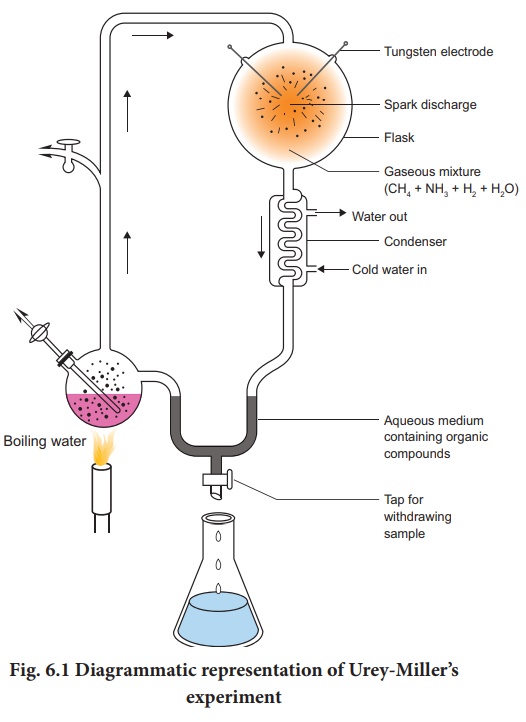Biological evolution - Experimental approach to the origin of life | 12th Zoology : Chapter 6 : Evolution
Chapter: 12th Zoology : Chapter 6 : Evolution
Experimental approach to the origin of life
Experimental
approach to the origin of life
Urey and Miller (1953), paved way for
understanding the possible synthesis of organic compounds that led to the
appearance of living organisms is depicted in the Fig. 6.1. In their
experiment, a mixture of gases was allowed to circulate over electric discharge
from an tungsten electrode. A small flask was kept boiling and the steam
emanating from it was made to mix with the mixture of gases (ammonia, methane
and hydrogen) in the large chamber that was connected to the boiling water. The
steam condensed to form water which ran down the ‘U’ tube. Experiment was
conducted continuously for a week and the liquid was analysed.
Glycine, alanine, beta alanine and aspartic acid were
identified. Thus Miller’s experiments had an insight as to the possibility of
abiogenetic synthesis of large amount
of variety of organic compounds in nature from a mixture of sample gases
in which the only source of carbon was methane. Later in similar experiments,
formation of all types of amino acids, and nitrogen bases were noticed.

Related Topics